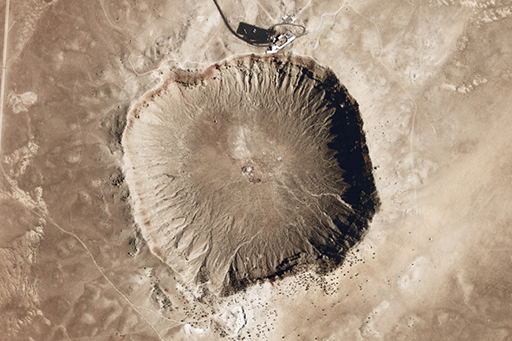2.4 Meteor Crater, Arizona
However, a second theory for how craters on the Moon formed came to the fore in the light of further discoveries made on the Earth. According to the new theory, these lunar craters could have been created by impacts.
In the early 1900s, Daniel Barringer, an American mining engineer and businessman, first proposed the idea that the supposedly volcanic Canyon Diablo crater in Arizona was, in fact, created by a metallic meteorite impact. Barringer was so sure of his idea that he set about trying to find the impactor’s iron metal, with a view to mining the crater. Perhaps fortunately, no significant iron deposits were ever found.
This suggestion was viewed with some scepticism, until in the 1960s, Eugene M. Shoemaker, a geologist and early planetary scientist, was able to confirm Barringer’s claim. Shoemaker found rare silica minerals at the crater site, of a kind formed only when rocks are severely shocked by the instantaneous application of extreme pressure. The only known mechanism to generate such instant high pressures in nature is a high-speed (hypervelocity) meteorite impact. (The term ‘hypervelocity’ means speeds of several, perhaps tens of, kilometres per second.) This led to the realisation that other craters, such as those found on the Moon, could also be formed by impacts, not volcanism. Even though there has been extensive volcanic activity on the Moon, almost all the craters, including all of the large ones, are now known to have been made by hypervelocity impacts (as you will see shortly).

